
Expert Problem Solvers / Real People
Volko Supply
|
is your Weathervane Source Servicing Home Owners & Contractors since 1948 |

Compare our prices!
Compare our service! 1-800-685-8263
CONTACT
US
|
Expert Problem Solvers / Real People
|
Volko Supply
|
Compare our prices! |
| HOME | HISTORY | INSTALLATION |
Weathervane History
The history of weather
vanes is an interesting one which spans many centuries and travels over many
countries.
The earliest recorded
weather vane honored the Greek god Triton, and adorned the Tower of the Winds in
Athens which was built by the astronomer Andronicus in 48 B.C. The figure, which
is believed to have been 4 to 8 feet long, had the head and torso of a man and
the tail of a fish. To the ancients, the winds had divine powers. In Greece and
pre-Christian Rome, weather vanes depicting the gods Boreas, Aeolus, Hermes and
Mercury decorated the villas of wealthy landowners.
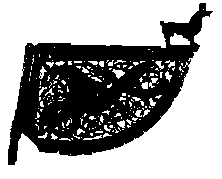
"Bronze
Banner", 1040 A.D., Kirche zu Soderala, Halsingland, Sweden (photo credit:
Clemens Hellmut Potz, "Wetterfahnen")
Archaeologists have
discovered bronze Viking weather vanes from the 9th century. They have an
unusual quadrant shape, usually surmounted by an animal or creature from Norse
fable. They were commonly used on Viking ships, and were also popular on
Scandinavian churches. These weather vanes can be seen even today in Sweden and
Norway.
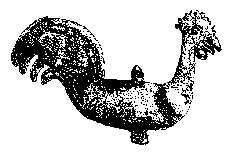
"Weather
Cock", 1733, St. Michael's, Southhampton, England (photo credit: Mabel
Reavley, "Weathervane Secrets")
In the ninth century A.D.,
the pope reportedly decreed that every church in Europe should show a cock on
its dome or steeple, as a reminder of Jesus' prophecy that the cock would not
crow the morning after the Last Supper, until the disciple Peter had denounced
Him three times (Luke 22:34). Because of this story, "weather cocks"
have topped church steeples for centuries, both in Europe and in America. The
11th century Bayeux Tapestry even includes a scene of a craftsman attaching a
rooster vane to the spire of the Westminster Abbey.
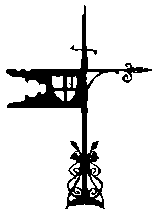
Banner
depicting the City of London's coat of arms, London Guildhall, 15th c. (photo
credit: A. Needham, "English Weathervanes")
It is probably the banners
which flew from medieval towers in Britain, Normandy and Germany which are the
precursors to our modern weather vanes. The word "vane" actually comes
from the Anglo-Saxon word "fane", meaning "flag".
Originally, fabric pennants would show the archers the direction of the wind.
Later, the cloth flags were replaced by metal ones, decorated with the insignia
or coat of arms of the lord or nobleman, and balanced to turn in the wind. From
these antecedents come the banners which the early American colonists favored
for their meeting halls and public buildings.
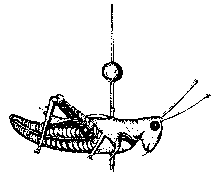
"Grasshopper"
made by Shem Drowne 1742, for Faneuil Hall, Boston (photo credit: Myrna Kaye,
"Yankee Weathervanes")
America's first documented
weather vane maker, Deacon Shem Drowne, created the famous grasshopper vane atop
Boston's Faneuil Hall (1742), as well as the banner for Boston's Old North
Church (1740), the rooster now on First Church in Cambridge (orig. 1721), and
the large copper Indian for Boston's Province House (1716). Thomas Jefferson
attached the weather vane on Monticello to a pointer in the ceiling of the room
directly below, so he could read the direction of the wind from inside his home.
And George Washington commemorated the end of the Revolutionary War by
commissioning a "Dove Of Peace" weather vane from Joseph Rakestraw in
1787, for his estate at Mount Vernon.
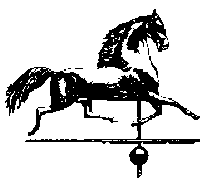
"Black
Hawk" (photo credit: L. W. Cushing & Sons, Waltham, Mass.,
"Catalogue No. 9")
In the early 1800's,
Americans favored weather vanes in patriotic designs, including the Goddess of
Liberty, and of course, the Federal Eagle. By the middle of the century, vanes
of famous racing horses like "Black Hawk", Smuggler", and
"George M. Patchen" were being modeled after the popular Currier and
Ives prints. In the 19th century, there were many weather vane manufacturers
mass-producing vanes in dozens of designs. Some of the more famous makers were
L. W. Cushing, J. W. Fiske, Harris & Co., A. L. Jewell & Co., and E. G.
Washburne & Co.
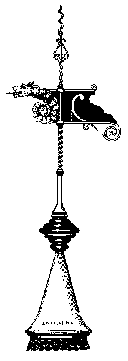
"Banneret"
by J. W. Fiske (photo credit: J. W. Fiske, New York, "1893 Catalog")
In the last decades of the
19th century, Victorian buildings had fancy weather vanes and elaborate
metalwork embellishing almost every inch of roof space. We have found that
Victorian style copperwork, de rigueur on Queen Anne, Second Empire,
Richardsonian and Tudor buildings, is in great demand for the Victorian Revival
homes of today. After 1900, the movement to a simpler style of architecture was
reflected in the silhouette weather vane, which often depicted sporting scenes
or figures of a humorous nature.
Current weather vane
artists enjoy the opportunity to both recreate the antique vanes of Europe and
America, and invent new sculptural forms, sometimes using non-traditional
materials. It will be interesting to see what the future will bring to the
constantly evolving History of Weather Vanes.
|
Volko
Supply Co. Inc.
205
Herricks Road Garden City Park, N.Y. 11040 |
Visit us on
Facebook
|
Mon-Fri 7-4 1-800-685-8263 Tel
516-741-4466 Fax
516-741-4470 |